The German Shepherd ranks among the most popular dog breeds worldwide. Known for its intelligence and versatility, this breed often serves in roles such as police, military, and service work. While some might view them as aggressive, many families cherish the German Shepherd for its loyalty and protectiveness. Typically, they have a muscular build, with dimensions ranging from medium to large. These dogs are particularly prevalent in Europe, but their popularity in the USA remains undeniable.
Health and Genetics: German Shepherds are predisposed to specific health issues, such as hip dysplasia. Regular vet check-ups and preventative care are vital to catch and manage potential problems early.
Training Needs: German Shepherds are highly intelligent and eager learners, making early and consistent training essential. Socialization from a young age helps in fostering well-rounded behavior.
Exercise Requirements: This breed requires regular and varied physical activity. Daily exercise, mental stimulation, and play are crucial to prevent boredom and behavioral challenges.
Grooming Essentials: German Shepherds have a dense double coat that sheds seasonally. Regular brushing and occasional baths are necessary to keep their coat healthy and reduce shedding.
Living Environment: An ideal home provides ample space for movement and play. Secure fencing is a must, and they benefit from access to resources like training facilities and dog parks.
German Shepherd Breed – Quick Facts
| Feature | Description |
|---|---|
| Size | Large; 22-26 inches (55.9-66 cm) |
| Weight Range | 50-90 pounds (22.7-40.8 kg); Males typically weigh more than females |
| Predominant Colors | Black and tan, sable, all black, blue, gray, white |
| Fur Length and Type | Medium; Straight |
| Lifespan | 9-13 years |
| Activity Level | High |
| Intelligence Level | High |
| Ease of Training | Average |
| Good with Kids | With Supervision |
| Training Requirements | Standard |
| Known Health Issues | Hip dysplasia, elbow dysplasia, degenerative myelopathy |
Physical Characteristics of a German Shepherd
The German Shepherd is a large dog, with males typically standing between 24 to 26 inches tall and females ranging from 22 to 24 inches. In terms of weight, males usually fall between 65 to 90 pounds, while females weigh slightly less, ranging from 50 to 70 pounds. The breed boasts a muscular and robust build, exuding strength and agility. Notably, males tend to have a more substantial frame and a more pronounced mane compared to their female counterparts.
German Shepherds have a medium-length coat that is dense and straight. While the texture can vary slightly, most have a harsh and rough outer coat with a softer undercoat. Recognized coat colors include black and tan, sable, all-black, gray, and red and black. Some might also have a pattern called “saddleback,” where the black coloration resembles a saddle shape on their back.
When observing the head of a German Shepherd, one can’t miss their strong, chiseled muzzle and alert, medium-sized eyes that come in shades of brown. Their ears are large and stand erect, always attentive to their surroundings. The breed’s expression often conveys confidence, intelligence, and curiosity.
While German Shepherds don’t have specific markings unique to the breed, their color patterns and distribution can vary, with some having a more pronounced black mask or a black “saddle” on their back. Their eyes are typically brown, but the shade can range from lighter almond to a deep, rich brown.
In terms of posture, the German Shepherd carries itself with poise and assurance. Their movement is smooth and rhythmic, covering a lot of ground with minimal effort. When observing their gait, it’s evident that the breed is built for endurance and agility, moving with a powerful drive from their hindquarters.
German Shepherd Temperament & Personality
German Shepherds are known for their alert and watchful nature. These dogs possess a mix of courage, confidence, and keenness, making them incredibly diligent in whatever task they undertake. While they’re not typically hyperactive, they are high-energy and require regular mental and physical stimulation to remain content.
In terms of interaction, German Shepherds are fiercely loyal to their families and are often protective, making them excellent watchdogs. While they can be reserved with strangers initially, they warm up once they gauge the individual’s intentions. When socialized properly, they can get along well with other dogs and pets in the household. However, their strong prey drive might lead them to chase smaller animals if not trained otherwise.
German Shepherds are renowned for their intelligence and learning capabilities. They’re quick learners, possessing a high level of focus, especially when engaged in tasks or training that challenge them mentally. Their eagerness to please their handlers makes them responsive to commands, but it’s essential for the training to be consistent and positive.
As high-energy dogs, German Shepherds require ample daily exercise. A simple walk won’t suffice; they thrive on more vigorous activities like running, playing fetch, or agility training. These activities not only cater to their physical needs but also keep their minds sharp and engaged.
The adaptability of a German Shepherd largely depends on their upbringing and training. They can thrive in various living situations, from apartments to homes with large backyards, as long as their exercise and mental stimulation needs are met. They blend well into family life and can be wonderful companions for children, given proper introductions and supervision. Their protective nature makes them naturally vigilant around the household, ensuring the safety of all family members.
What Does The Ideal Home For a German Shepherd Look Like?
An ideal home for a German Shepherd would prioritize space, safety, and a conducive environment. Given their size and energy levels, having access to a large backyard or open space is beneficial. This space should be securely fenced to prevent escapes, especially considering their alertness to external stimuli and strong prey drive.
German Shepherds can fit well into various family settings, from singles to large families. However, households with small children should ensure supervised interactions to prevent accidental nips or knocks due to the dog’s size. For homes with elderly members, it’s essential to note that German Shepherds are active and might unintentionally bump into or knock over frail individuals. Socialization from a young age is crucial if the household has other pets, ensuring harmonious relationships.
For their physical and mental well-being, German Shepherds require dedicated exercise and activity spaces. Off-leash areas are ideal for them to run and play freely. If you have a yard, providing designated spots for activities like digging can keep them engaged and prevent them from tearing up unwanted areas.
Proximity to essential resources plays a significant role in their well-being. Access to veterinary care ensures timely health check-ups and vaccinations. Training facilities can be beneficial, especially for first-time German Shepherd owners, to harness the breed’s intelligence and energy positively. Dog parks are also great for socializing and allowing them to play with other dogs.
Breed-specific home considerations for German Shepherds include their tolerance for weather. While they have a dense double coat that provides some protection against cold conditions, it’s essential to ensure they have a sheltered spot during extreme weather. Their coat can also make them susceptible to overheating in very hot climates, so shaded areas and ample water are crucial.
Additionally, German Shepherds are alert and can be sensitive to noise, so homes that offer a relatively quiet environment or spaces where they can retreat from loud noises are ideal.
Can German Shepherds be left alone?
German Shepherds have a moderate capacity for solitude. While they are loyal and bond closely with their families, they can be trained to tolerate periods of being alone. However, if left by themselves for extended periods regularly, they might develop separation anxiety. This anxiety can manifest in behaviors like excessive barking, whining, or even destructive actions such as chewing on furniture or digging. Proper training from a young age, combined with mental and physical stimulation, can mitigate these behaviors. It’s advisable for owners to gradually acclimate their German Shepherds to alone time, ensuring they have toys or activities to keep them engaged.
Ideal Owner for a German Shepherd
An ideal owner for a German Shepherd would be someone with prior experience in handling dogs, preferably medium to large breeds. The German Shepherd’s assertive temperament, combined with its intelligence and energy, can pose challenges for first-time dog owners. Seasoned handlers or those familiar with active and intelligent breeds might find it easier to navigate these challenges.
Matching the German Shepherd’s energy levels, the ideal owner would lead an active lifestyle. This breed thrives in environments where they can be involved in various activities, from long walks and hikes to agility training. They aren’t suited for individuals who prefer a sedentary lifestyle, as insufficient physical and mental stimulation can lead to undesirable behaviors.
Training commitment is paramount for German Shepherd owners. This breed is eager to learn and responds well to training, but consistency is key. A combination of firm yet gentle guidance works best, ensuring the dog respects the owner without feeling threatened. Positive reinforcement techniques, like treats and praises, can be effective.
Given the breed’s needs and characteristics, the ideal owner should be willing to dedicate a significant amount of time daily. Exercise and training sessions can take up a few hours each day. Additionally, bonding activities, such as playtime, cuddles, or even simple tasks like grooming, are essential.
Are German Shepherds good with kids?
German Shepherds, when properly socialized, can be excellent with children. They are often patient and can form strong bonds with kids in the household, becoming their loyal protectors. Their playful nature aligns well with the energy levels of children, making them great playmates. They enjoy activities like fetch, hide and seek, or even just running around in the yard with kids.
However, due to their size and strength, interactions between German Shepherds and very young children should always be supervised. It’s to ensure that the dog doesn’t accidentally knock over a toddler during play. Additionally, children should be taught how to approach and interact with the dog properly, understanding the dog’s boundaries.
Are German Shepherds aggressive?
German Shepherds are known for their protective nature, which can sometimes be misconstrued as aggression. Their initial response to unfamiliar stimuli, whether it’s unknown animals, people, or environments, is often one of caution and alertness. This breed is wired to assess situations before reacting, which is one reason they excel as police and guard dogs.
When interacting with unfamiliar people, a German Shepherd might appear reserved or aloof initially. Proper socialization from a young age can help ensure that this reservation doesn’t escalate into aggressive behavior. Similarly, with other animals, especially dogs, a well-socialized German Shepherd is typically amicable, but they might exhibit dominant behaviors if they feel their territory is threatened.
There are certain triggers or situations that might provoke aggressive responses in some German Shepherds. These can include:
- Protecting their territory or family: If they perceive a threat to their home or loved ones, they might react aggressively.
- Pain or discomfort: Like any dog, a German Shepherd might snap or growl if they’re in pain.
- Lack of socialization: Without proper exposure to various people, animals, and environments, they might become fearful or aggressive.
- Improper handling: If disciplined too harshly or treated poorly, they can develop aggressive tendencies.
How Popular Is This Breed?
The German Shepherd is one of the most recognized and popular dog breeds globally. Its versatility, intelligence, and loyalty have endeared it to countless individuals and families.
In the USA, the German Shepherd consistently ranks as one of the top three most popular dog breeds according to the American Kennel Club. Their prominence in the country can be attributed to their roles as police dogs, service animals, and beloved family pets. The breed’s frequent appearance in Hollywood films and television shows has also bolstered its popularity.
Globally, the German Shepherd enjoys widespread acclaim. In Europe, especially in its native Germany, the breed is revered for its working capabilities and has a rich history as a herding and guard dog. The breed’s involvement in World Wars as messenger and rescue dogs further solidified its reputation as a reliable and courageous companion.
In regions like Asia and Africa, the German Shepherd is favored for its guarding abilities, often employed in security roles due to its alertness and protective nature. Its adaptability to different climates and environments makes it a preferred choice in various parts of the world.
German Shepherd Grooming
German Shepherds have a double coat, which consists of a dense undercoat and a harsher outer coat. This combination requires regular grooming to keep it in optimal condition and ensure the dog’s comfort.
Frequency and Essentials: Brushing should be done at least two to three times a week to remove loose hairs and prevent matting. During shedding seasons, typically in spring and fall, daily brushing becomes essential to manage the increased volume of hair loss. When it comes to washing, German Shepherds don’t need frequent baths. Unless they get particularly dirty, a bath every couple of months will suffice. When washing, ensure that the undercoat gets thoroughly wet and rinsed. For drying, a combination of towel drying followed by blow-drying on a cool setting works best to ensure the undercoat dries completely.
Tools and Products: A slicker brush is excellent for the German Shepherd’s thick coat, helping to remove loose hairs and prevent tangles. An undercoat rake is also beneficial, especially during shedding seasons. When it comes to shampoos and conditioners, it’s advisable to use products designed for double-coated breeds or those with sensitive skin. These products help maintain the coat’s natural oils and ensure the skin doesn’t get irritated.
Professional Grooming: While the German Shepherd’s coat doesn’t require trimming or stripping, some owners opt for professional grooming sessions, especially during shedding seasons. A professional groomer can provide a thorough deshedding treatment, which can significantly reduce the amount of loose hair around the home. Additionally, groomers can check and clean ears, trim nails, and provide other essential grooming services.
Potential Challenges: One of the main challenges in grooming a German Shepherd is managing their shedding. The volume of hair they lose, especially during shedding seasons, can be overwhelming for some owners. Another challenge can be matting, especially in the dense undercoat. Regular brushing helps prevent this. Some German Shepherds might be sensitive to certain grooming activities, like nail trimming or ear cleaning. It’s essential to introduce these activities gradually and ensure the dog is comfortable. Seasonal variations in coat care are also a consideration, with increased grooming needs during shedding seasons.
Do German Shepherds shed?
Yes, German Shepherds do shed. They are often referred to as “year-round shedders” with two notable shedding seasons, typically in spring and fall, when they shed their undercoat. During these times, the shedding can be quite profuse, often termed as “blowing their coat.”
To manage the shedding and ensure cleanliness in the living environment, here are some tips:
- Regular Brushing: Brushing your German Shepherd multiple times a week, and daily during shedding seasons, helps remove loose hairs before they end up around the house.
- Deshedding Tools: Investing in a quality deshedding tool can significantly reduce the amount of loose hair. These tools are designed to reach the dense undercoat and remove loose hairs effectively.
- Bathing: While frequent baths aren’t necessary, a bath before the peak shedding season can help loosen the undercoat and make the subsequent brushing more effective.
- Diet: A balanced diet with essential fatty acids can promote a healthy coat, potentially reducing excessive shedding.
- Vacuuming: Regular vacuuming of living spaces, especially areas where the dog frequently rests, helps manage the amount of hair around the home.
- Furniture Covers: Using washable furniture covers or throws can make it easier to manage hair on sofas and chairs.
German Shepherd Diet: What Do They Eat?
German Shepherds, being active and large dogs, have specific dietary requirements to support their energy levels, muscle health, and overall well-being.
A balanced diet for a German Shepherd should include:
- Proteins: High-quality animal proteins like chicken, beef, or fish should form the core of their diet. Proteins support muscle growth and repair.
- Fats: Essential fatty acids, particularly omega-3 and omega-6, contribute to a shiny coat and healthy skin.
- Carbohydrates: Sources like sweet potatoes or brown rice provide energy and dietary fiber, aiding digestion.
- Vitamins and Minerals: Necessary for bone health, immune system support, and overall wellness.
When considering dog food types, kibble, wet food, and raw diets can all be suitable for German Shepherds, provided they meet the breed’s nutritional requirements. Some German Shepherds may have sensitivities or allergies, often to grains or certain proteins. It’s crucial to monitor for signs of allergies, such as itching or digestive issues, and adjust the diet accordingly.
As German Shepherds transition through life stages, their dietary needs change:
- Puppies: Require more protein and fat to support rapid growth. They should be fed specially formulated puppy food to ensure they get the necessary nutrients.
- Adults: Need a balanced diet that supports their activity level without leading to weight gain.
- Seniors: Might need fewer calories, with an increased focus on joint-supporting nutrients like glucosamine.
Treats and Snacks: Suitable treats for German Shepherds include baked dog biscuits, lean meat cuts, and dental chews. It’s essential to ensure treats don’t exceed 10% of their daily caloric intake. Avoid treats with high salt or artificial additives.
While German Shepherds can enjoy some human foods like carrots, blueberries, or plain cooked chicken, others are off-limits. Foods like chocolate, grapes, onions, and xylitol-containing products are toxic and should be avoided entirely.
German Shepherds are prone to certain dietary-related issues:
- Obesity: Overfeeding or not providing enough exercise can lead to weight gain. It’s essential to monitor their weight and adjust their food intake accordingly.
- Food Intolerance: Symptoms can include digestive issues or skin problems. If suspected, a food trial or consultation with a vet might be necessary.
- Bloat: German Shepherds are at risk of bloat, a serious condition. To prevent it, avoid feeding them large meals or exercising them immediately after eating.
How to Feed a German Shepherd
Feeding a German Shepherd requires a well-thought-out routine to ensure they’re getting the right nutrients in the right amounts, while also accommodating their unique breed characteristics. Given their size and active nature, German Shepherds have a relatively high metabolism, which means they burn calories quickly and require substantial nourishment to maintain their energy levels.
When considering feeding routines, it’s often recommended to feed adult German Shepherds twice a day: once in the morning and once in the evening. This schedule helps in preventing rapid blood sugar drops and keeps their energy levels stable. Puppies, due to their smaller stomach capacity and higher energy needs, might benefit from being fed three to four times daily.
The type of bowl used can also influence a German Shepherd’s eating habits. Given their deep chests, raised bowls can be a suitable choice as they might help in preventing bloat, a condition the breed is prone to. However, it’s essential to consult with a veterinarian regarding the best bowl height. Additionally, using slow-feeder bowls can be beneficial for those dogs that tend to eat too quickly, ensuring they take their time and reduce the risk of digestive issues.
Mealtime practices play a pivotal role in a German Shepherd’s health. It’s vital to provide a quiet and stress-free environment for them to eat. Distractions or disturbances during mealtime can cause anxiety, leading to indigestion or even refusal to eat. After feeding, it’s advisable to allow some rest time before engaging in vigorous activities to reduce the risk of bloat.
While German Shepherds aren’t particularly known for quirky eating habits, some might display certain preferences or aversions. Observing your dog and adjusting the meal components, temperature, or even the feeding spot can make the eating experience more enjoyable for them. Always ensure that fresh water is available and easily accessible at all times.
How Much to Feed a German Shepherd
Determining the right amount of food for a German Shepherd hinges on various factors, primarily their age, weight, and activity level. It’s essential to strike a balance to ensure they’re receiving adequate nutrition without overfeeding, which could lead to obesity.
For German Shepherd puppies, who are growing rapidly, their caloric needs are higher than adults. Typically, a puppy aged 2 to 6 months might require about 740 to 920 calories daily, depending on their weight. As they grow and transition to adulthood, from 6 months to a year, the caloric requirement can range from 900 to 1,500 calories daily.
Adult German Shepherds, on the other hand, have a more stable caloric need. An average adult female German Shepherd weighing about 70 pounds might need around 1,700 calories a day if she’s moderately active. For a similarly active male weighing about 90 pounds, the requirement could be about 2,100 calories daily. However, for highly active German Shepherds, like those used in police work or regular agility training, the caloric needs can be significantly higher, sometimes up to 2,900 calories.
Senior German Shepherds, much like humans, tend to slow down with age. Their metabolism might not be as robust, and they might not be as active, leading to a reduced caloric need. Adjusting their portion sizes to prevent weight gain is essential.
Regardless of age, it’s vital to regularly monitor a German Shepherd’s weight and body condition. If you notice them gaining unnecessary weight, it might be time to reduce their portion size slightly or switch to a lower-calorie food. Conversely, if they seem too thin, increasing their food intake or opting for a higher-calorie diet might be beneficial.
Another thing to remember is that the quality of the dog food plays a role. High-quality dog foods tend to be more nutrient-dense, which means you might need to feed less of it compared to a lower-quality option.
Health Considerations
German Shepherds, while known for their robustness and versatility, are also predisposed to certain health conditions. One of the most prevalent concerns in the breed is hip dysplasia, a genetic condition where the hip joint doesn’t develop correctly. This can lead to arthritis over time and can be painful for the dog. Elbow dysplasia is another joint issue that some German Shepherds might face.
Apart from joint issues, German Shepherds might also be at risk for certain heart conditions, such as aortic stenosis, which is a narrowing of the aorta. This can put extra strain on the heart, leading to potential complications. Additionally, some German Shepherds might face skin issues, often manifested as allergies or hot spots, which can be itchy and uncomfortable.
The average lifespan of a German Shepherd ranges from 9 to 13 years. As they transition into their senior years, they might face a set of age-related issues, such as reduced mobility, vision or hearing decline, and potential cognitive changes.
Regular vet visits become even more crucial during this time to catch and address potential health problems early. It’s also beneficial to adjust their diet and exercise routines to cater to their changing needs, ensuring they remain healthy and comfortable.
Preventative healthcare for German Shepherds encompasses several aspects. A regular vaccination schedule, starting from puppyhood, is essential to protect them from various diseases. It’s also vital to ensure they’re protected against common pests like fleas, ticks, and worms. Regular treatments or preventive medications can help in this regard. Routine vet check-ups, at least once a year, can help in early detection of potential health issues, ensuring they’re addressed promptly.
Sensitivities and allergies are not uncommon in German Shepherds. These can be triggered by various factors, from environmental allergens like pollen or dust mites to certain materials like specific types of bedding.
Dietary sensitivities can also manifest, with some dogs reacting to particular ingredients in their food. If a German Shepherd shows signs of an allergy, such as excessive itching, redness, or digestive issues, it’s crucial to identify and eliminate the trigger. In cases of food allergies, a hypoallergenic diet or an elimination diet might be recommended.
How much exercise do German Shepherds need?
German Shepherds are known for their high energy levels and active nature. Originating as working dogs, they have a natural inclination for tasks that challenge both their body and mind. As such, they require substantial daily exercise to keep them physically fit and mentally stimulated.
Typically, a German Shepherd should get at least one to two hours of physical activity daily. This can be broken down into multiple sessions, combining different activities. Walking remains a fundamental exercise for them. A brisk walk, twice daily, can serve as a baseline activity. However, merely walking might not suffice for their energy levels. Incorporating activities like fetch, tug-of-war, or even agility training can be beneficial. These not only provide physical exertion but also challenge their cognitive abilities.
In addition to traditional exercises, German Shepherds thrive in structured activities. Enrolling them in obedience classes, herding exercises, or even scent work can be both fulfilling and tiring for the dog. Such activities tap into their natural instincts and provide a sense of purpose.
However, while they are robust and agile, it’s essential to be aware of the breed’s predisposition to certain health issues like hip dysplasia. High-impact exercises, especially in young dogs, can exacerbate such conditions. Activities like jumping or intensive agility might need to be introduced gradually and under guidance to ensure they don’t put undue strain on the dog’s joints.
Mental stimulation is as crucial as physical exercise for German Shepherds. Puzzle toys, hide-and-seek games, or even simple obedience drills can keep their mind engaged. It helps prevent boredom and associated destructive behaviors.
German Shepherd Training
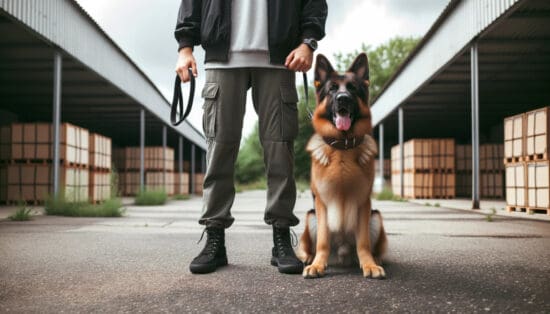
Training is paramount for German Shepherds given their intelligence and energy. Starting early lays the foundation for a well-behaved, well-adjusted adult dog. As early as eight weeks old, puppies can begin learning basic commands such as “sit,” “stay,” and “come.”
Given their keen intellect, German Shepherds pick up commands relatively quickly. However, the key to successful training is consistency and positive reinforcement. Every time the dog exhibits a desired behavior, rewarding them with treats, praise, or play reinforces that behavior.
Socialization is another critical aspect of German Shepherd training. The significance of socialization cannot be overstated. German Shepherds are naturally protective and can be wary of strangers, both human and animal. To ensure they grow up to be sociable and well-rounded, expose them to various environments, sounds, animals, and people from a young age.
Regular trips to parks, busy streets, or inviting guests over can help acclimatize them to different scenarios. Enrolling them in puppy socialization classes can also be beneficial, as it provides a controlled environment for them to interact with other dogs and people.
While German Shepherds are generally eager to please, they do have some breed-specific behavioral tendencies. Their herding background can sometimes manifest in trying to “herd” moving objects, including children or vehicles. This behavior can be managed by redirecting their energy to appropriate activities like fetch or tug-of-war.
Additionally, their protective nature can sometimes tip into overprotectiveness. Consistent training and socialization can help strike a balance, ensuring they’re protective but not overly aggressive.
For those looking to tap into the German Shepherd’s full potential, advanced training opportunities abound. Their intelligence and agility make them prime candidates for activities like agility courses. Moreover, their innate protective and observant nature suits them for roles as service or therapy dogs, provided they undergo the necessary training.
Lastly, potty training and house manners are essential for any dog breed, and the German Shepherd is no exception. Potty training should start as soon as the puppy arrives home. Establishing a routine, being vigilant for signs that the puppy needs to relieve itself, and rewarding successful outdoor potty trips can expedite the process.
As for house manners, consistency is key. Establish boundaries early on, and ensure all family members adhere to them. Given the German Shepherd’s size, teaching them not to jump on people or furniture is especially important.
Are German Shepherds easy to train?
German Shepherds are generally considered one of the easier breeds to train due to their high intelligence and eagerness to please. They possess a remarkable attention span, especially when engaged in tasks or activities that stimulate their minds. This focus makes them quick learners, able to pick up commands and tricks faster than many other breeds.
Their innate desire to work alongside their human companions further aids the training process. Their history as herding and working dogs means they’re hardwired to collaborate with humans, making them receptive to instructions.
This eagerness to please can be a double-edged sword, though. While it makes them attentive and obedient, it also means they thrive on consistent feedback. Positive reinforcement, such as treats or praise, can go a long way in reinforcing desired behaviors.
However, potential challenges arise mainly from their high energy levels and protective nature. If not given an appropriate outlet for their energy, German Shepherds can become restless and resort to undesirable behaviors like chewing or digging.
Their protective instincts, while admirable, can sometimes lead to overprotectiveness or wariness around strangers. Proper socialization from a young age can help mitigate these challenges, ensuring they’re comfortable around unfamiliar faces and environments.
Are German Shepherds smart dogs?
Absolutely, German Shepherds are renowned for their intelligence and cognitive abilities, often ranking among the top breeds in terms of brainpower. Their cognitive strengths are evident in their problem-solving skills.
Faced with challenges, a German Shepherd will analyze the situation and often find innovative solutions, demonstrating a level of resourcefulness that sets them apart.
Their learning speed is another testament to their intelligence. German Shepherds can pick up new commands in just a few repetitions, making them star pupils in obedience classes. Their retention is commendable too; once they’ve learned a task or command, they remember it for a long time.
Furthermore, their aptitudes extend beyond basic obedience. German Shepherds have been widely utilized in specialized roles due to their notable intelligences.
For instance, their keen sense of smell, combined with their intelligence, makes them excellent search and rescue dogs. Their loyalty and protective nature, backed by their quick thinking, are reasons they’re preferred as police and military dogs.
In terms of emotional intelligence, German Shepherds are adept at reading human emotions and often adjust their behavior accordingly. They can sense when their owner is upset, anxious, or excited, showcasing an empathetic side to their intelligence.
What are the drawbacks of German Shepherds?
While German Shepherds are undeniably an admirable breed with many strengths, like all breeds, they come with certain challenges that potential owners should be aware of.
Behavioral Challenges: German Shepherds, given their intelligence and energy, can exhibit behaviors such as destructiveness, especially when they’re bored or not given sufficient mental and physical stimulation. It’s not uncommon for an under-stimulated German Shepherd to chew on furniture, dig up gardens, or engage in other destructive behaviors. These tendencies can be managed with proper training, regular exercise, and mental engagement. Additionally, some German Shepherds can be vocal, alerting their owners with barking at the slightest noise. Training from an early age and socialization can help in curbing excessive barking.
Health and Genetic Issues: German Shepherds are prone to certain health conditions, including hip and elbow dysplasia, which can lead to arthritis and pain in later life. Degenerative myelopathy, a severe spinal cord disease, is also a concern. These health challenges not only mean potential heartache for the owner but can also lead to increased veterinary expenses. Regular check-ups, a healthy diet, and responsible breeding can help mitigate some of these issues.
Grooming Requirements: Their double coat sheds year-round and heavily during the shedding season. This means they require regular brushing, often multiple times a week, to reduce the amount of hair around the home and to keep their coat in top condition. This can be seen as high-maintenance by some owners.
Exercise and Activity Needs: German Shepherds are active and energetic dogs. They require regular exercise to keep them physically and mentally stimulated. A simple walk around the block isn’t enough for this breed; they thrive on more engaging activities like fetch, agility training, or long hikes. Owners who lead a sedentary lifestyle or those without the time to engage with their dog might find this breed challenging.
Specialized Care: Given their intelligence and working dog heritage, German Shepherds thrive when given tasks or involved in activities. This means they might require more advanced training or engagement in activities like agility or search and rescue. Their diet needs to be balanced and catered to their active lifestyle, and any changes in their behavior or diet should be closely monitored to ensure they’re at their healthiest.
Popular German Shepherd Mixed Breeds
The appeal of creating mixed breeds, particularly with German Shepherds, often arises from a combination of reasons. Some breeders and enthusiasts aim to combine the best traits of two breeds, whether for temperamental, health, or aesthetic reasons. The inherent intelligence, loyalty, and versatility of the German Shepherd make it a desirable breed to mix with others.
One of the most popular German Shepherd mixes is the Shepherd-Lab mix (Sheprador). This mix combines the intelligence and discipline of the German Shepherd with the friendly and outgoing nature of the Labrador Retriever. Often, Shepradors are medium to large-sized dogs with a thick coat that can come in a range of colors.
Another popular mix is the German Shepsky, a blend of German Shepherd and Siberian Husky. This mix tends to produce strikingly beautiful dogs with a blend of the Husky’s blue eyes and the German Shepherd’s distinct facial markings. They’re known to be energetic, intelligent, and occasionally stubborn.
The Golden Shepherd, a mix between the German Shepherd and Golden Retriever, is another cherished mix. This breed often combines the German Shepherd’s loyalty and intelligence with the Golden Retriever’s friendly and gentle nature. They are typically medium to large-sized dogs with a dense double coat.
When considering temperament, it’s essential to realize that mixed breeds can inherit characteristics from either parent. For instance, a German Shepherd mixed with a more laid-back breed might result in a more relaxed temperament than a purebred German Shepherd. Conversely, if mixed with a more energetic breed, the offspring might require even more exercise and mental stimulation.
Care requirements can also vary. A German Shepherd mixed with a breed that has a longer or curlier coat might have different grooming needs. Similarly, diet and exercise needs might shift depending on the size and energy level of the other breed involved.
For those considering adopting a German Shepherd mix, it’s crucial to research and understand both parent breeds thoroughly. This will provide a clearer picture of potential temperament, size, and care needs. Adopting from reputable breeders or rescues that prioritize ethical breeding practices and the well-being of the dogs is paramount.

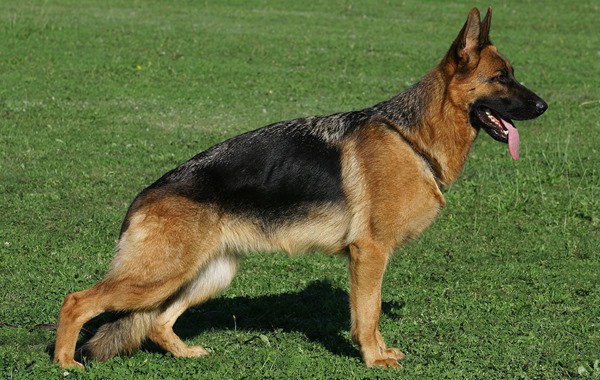
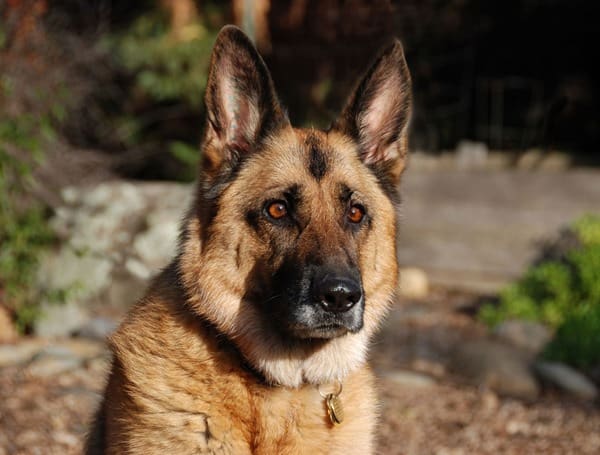
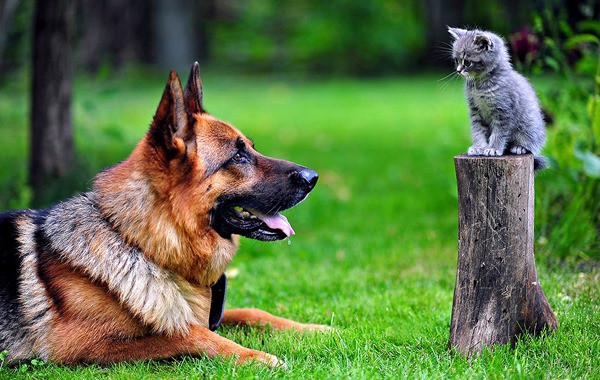
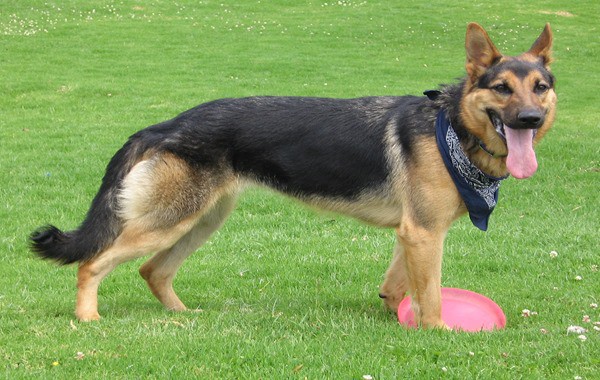

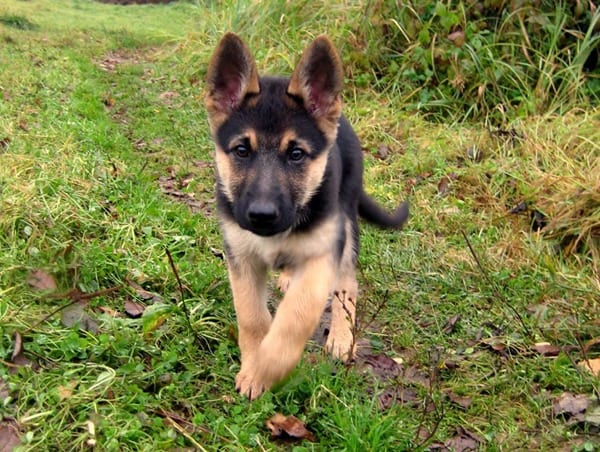


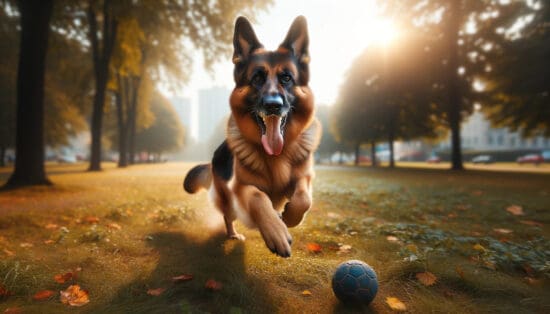
We have a long-coated white German Shepherd (AKC pedigree, according to our breeder), but I’ve seen two mentions and a video of Swiss shepherds that are dead ringers for our dog. What are the facts?